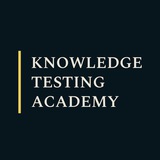MCQ. No.193| General pharmacology
Elimination of a drug is described as being heavily dependent on Phase II metabolic reactions. Which of the following is a Phase II reaction as far as drug elimination goes?
Elimination of a drug is described as being heavily dependent on Phase II metabolic reactions. Which of the following is a Phase II reaction as far as drug elimination goes?
Anonymous Quiz
13%
Deamination
72%
Glucuronidation
10%
Nitro reduction
5%
Ester hydrolysis
MCQ. No.194| G.P
Experimental evaluation of pharmacokinetics of drug under development leads to finding that it “undergoes significant first-pass hepatic metabolism.” Which of the following route was most likely used to reach this conclusion?
Experimental evaluation of pharmacokinetics of drug under development leads to finding that it “undergoes significant first-pass hepatic metabolism.” Which of the following route was most likely used to reach this conclusion?
Anonymous Quiz
15%
Sublingual
61%
Oral
19%
Intramuscular
5%
Rectal
MCQ. No.195| General pharmacology
Tolerance as well as drug resistance can be a consequence of:
Tolerance as well as drug resistance can be a consequence of:
Anonymous Quiz
24%
Activation of a drug after hepatic first-pass
48%
Drug dependence
13%
Depressed renal drug excretion
15%
Increased metabolic degradation
MCQ. No.196| General pharmacology
Ionizable group is responsible for which of the following:
Ionizable group is responsible for which of the following:
Anonymous Quiz
20%
The ability to diffuse to the site of action
15%
The potency and the toxicity
10%
The duration of action
55%
All of the above
MCQ. No.197| General pharmacology
Elimination is expressed as follows:
Elimination is expressed as follows:
Anonymous Quiz
43%
Time required to decrease the amount of drug in plasma by one-half
26%
Clearance of an organism from a xenobiotic
9%
Rate of renal tubular reabsorption
6%
Rate of renal tubular reabsorption
16%
Clearance speed of some volume of blood from substance
MCQ. No.198| General pharmacology
What phenomenon can occur in case of using a combination of drugs?
What phenomenon can occur in case of using a combination of drugs?
Anonymous Quiz
12%
Tachyphylaxis
73%
Synergism
12%
Tolerance
4%
Accumulation
MCQ. No.199| General pharmacology
What term is used to describe a decrease in responsiveness to a drug which develops in a few minutes?
What term is used to describe a decrease in responsiveness to a drug which develops in a few minutes?
Anonymous Quiz
12%
Refractoriness
32%
Cumulative effect
36%
Tachyphylaxis
20%
Tolerance
MCQ. No.200| General pharmacology
Give the definition for a therapeutical dose:
Give the definition for a therapeutical dose:
Anonymous Quiz
28%
The amount of a substance to accelerate an increase of concentration of medicine in an organism
30%
The amount of a substance to produce the minimal biological effect
8%
The amount of a substance to produce effects hazardous for an organism
34%
The amount of a substance to produce the required effect in most patients
MCQ. No.201
Dextran40 is ____________% solution in Dextrose or Saline.
Dextran40 is ____________% solution in Dextrose or Saline.
Anonymous Quiz
24%
10
28%
20
15%
30
32%
40
MCQ. No.202 to 206 involve the following case:
XYZ is a 39-year-old female with bacterial endocarditis. She is started on gentamicin 80 mg iv twice daily and penicillin G iv 1.8 g every 6 h.
XYZ is a 39-year-old female with bacterial endocarditis. She is started on gentamicin 80 mg iv twice daily and penicillin G iv 1.8 g every 6 h.
MCQ. No.202
Which of the following is a Penicillin G
Which of the following is a Penicillin G
Anonymous Quiz
13%
penicillin v
39%
phenoxymethylpenicillin
6%
pivmecillinam
43%
benzylpenicillin
MCQ. No.203
Penicillin G is available in 600 mg vials. How many vials are required for each dose?
Penicillin G is available in 600 mg vials. How many vials are required for each dose?
Anonymous Quiz
31%
30
34%
3
18%
2
17%
1
MCQ. No.204
Gentamicin: 1. has a broad spectrum of activity. 2. is contraindicated in hepatic impairment. 3. therapy may be changed to oral administration when the patient is stabilised.
Gentamicin: 1. has a broad spectrum of activity. 2. is contraindicated in hepatic impairment. 3. therapy may be changed to oral administration when the patient is stabilised.
Anonymous Quiz
17%
1 only
22%
2 only
36%
2, 3 only
25%
1, 2 only
MCQ. No.205
Penicillin G: 1.is bacteriostatic. 2.is bactericidal. 3.can be given as an intramuscular injection.
Penicillin G: 1.is bacteriostatic. 2.is bactericidal. 3.can be given as an intramuscular injection.
Anonymous Quiz
21%
1,2only
47%
2,3only
25%
1only
8%
3only
MCQ. No.206
The maximum adult daily dose of paracetamol is:
The maximum adult daily dose of paracetamol is:
Anonymous Quiz
29%
1g
31%
2g
17%
3g
23%
4g
MCQ. No.207
28-year-old female who suffers from tension headache. She would like to have a medication that is stronger than paracetamol. Which of the following Analgesics that could be recommended to her: 1.co-codamol 2.ibuprofen 3.amitriptyline
28-year-old female who suffers from tension headache. She would like to have a medication that is stronger than paracetamol. Which of the following Analgesics that could be recommended to her: 1.co-codamol 2.ibuprofen 3.amitriptyline
Anonymous Quiz
39%
2,3only
24%
3only
16%
1only
21%
1,2only
MCQ. No.208| Pharmacognosy
One of the following is not natural auxin.
One of the following is not natural auxin.
Anonymous Quiz
22%
Indole-3-butyric acid (IBA)
25%
Indole 3-acetonitrile (IAN)
32%
Phenyl acetic acid
21%
4-choloroindole-3-acetic acid
MCQ. No.209| Pharmacognosy
One of the following is not an organized drug:
One of the following is not an organized drug:
Anonymous Quiz
14%
Seeds of coriander
68%
Juice of Aloe
11%
Leaf of senna
8%
Bark of cinnamon
MCQ. No. 210| Pharmacognosy
Who is considered as father of Indian medicine?
Who is considered as father of Indian medicine?
Anonymous Quiz
12%
Seydler
49%
Hippocrates
23%
Sushrut
17%
Charak
